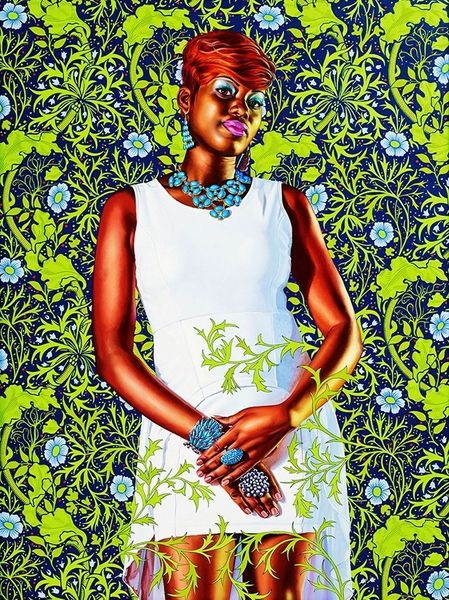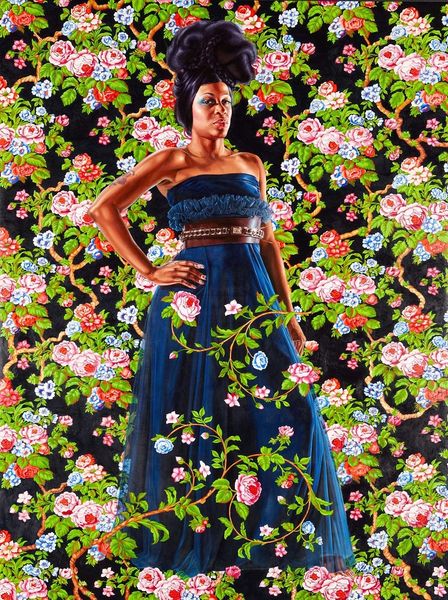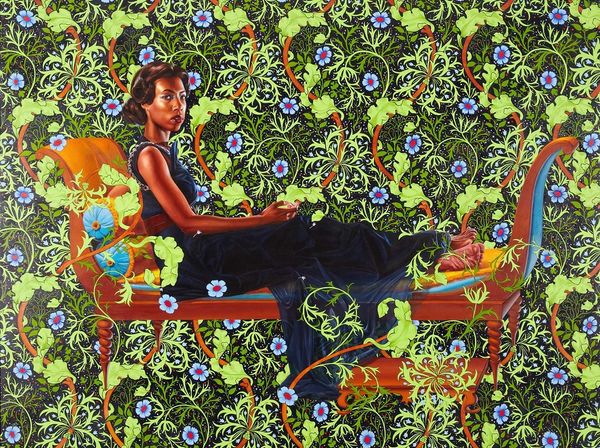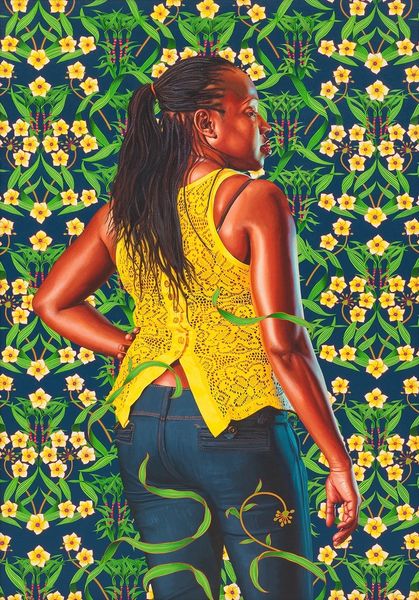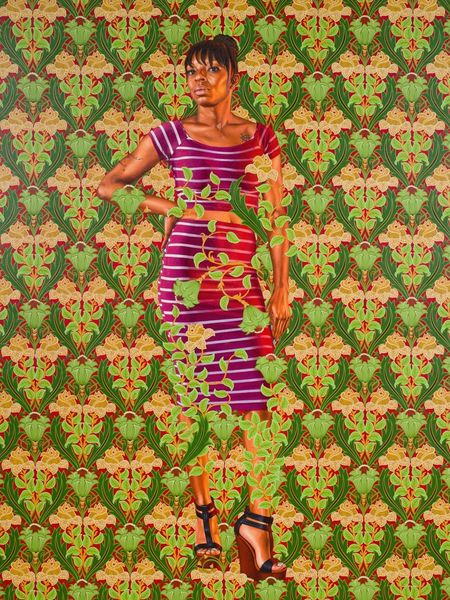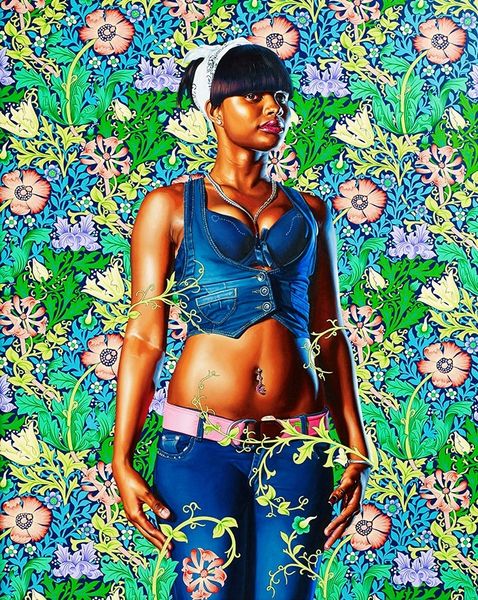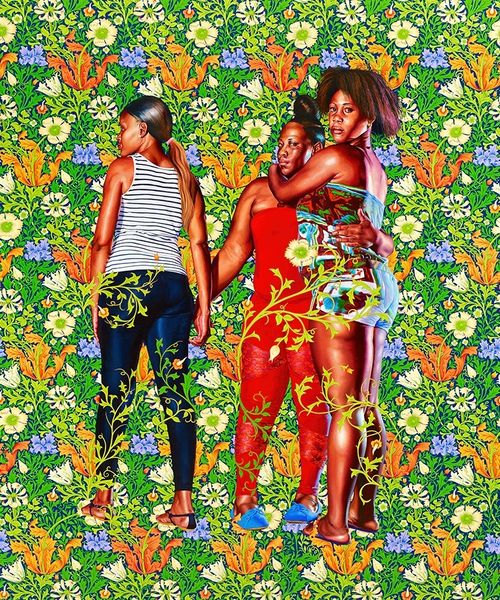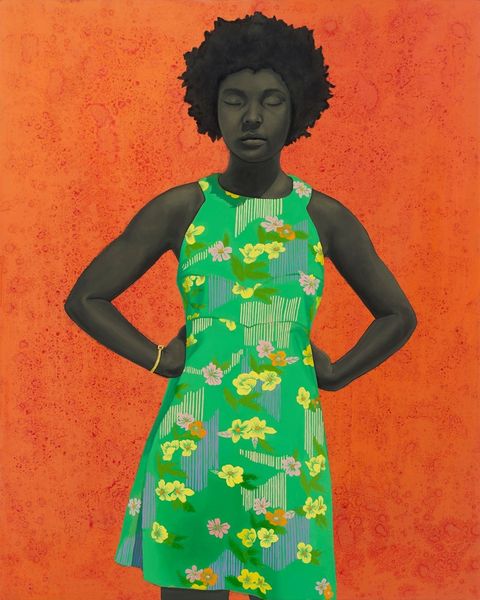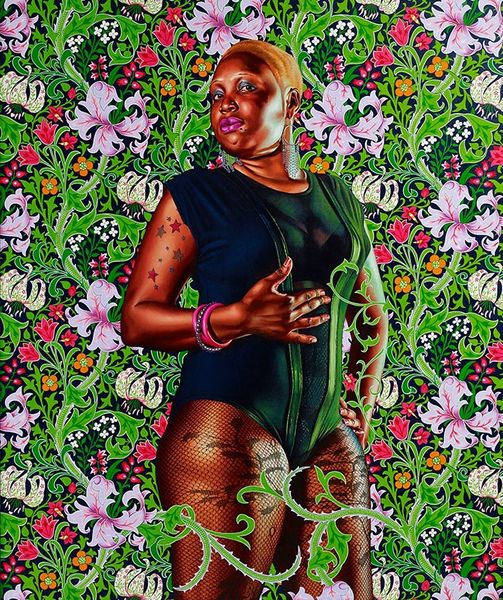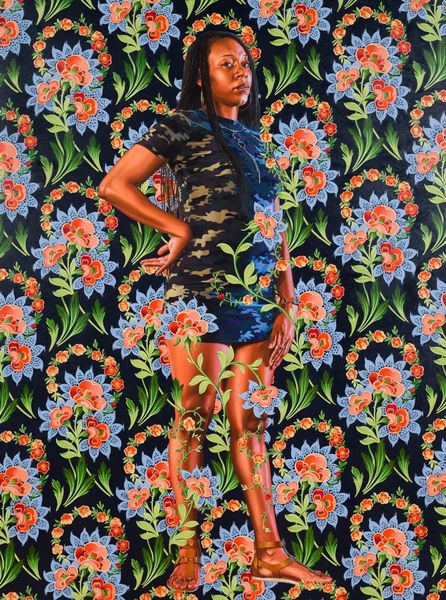
painting, oil-paint
#
portrait
#
pattern-and-decoration
#
contemporary
#
painting
#
graffiti art
#
oil-paint
#
mixed mediaart
#
figuration
Copyright: Public Domain: Artvee
Editor: We are looking at "The Two Sisters," a 2012 mixed-media painting by Kehinde Wiley. I’m immediately struck by the juxtaposition of the figure and the ornate floral background; it's bold, almost a visual shout. How do you interpret this work? Curator: The visual shout, as you call it, is quite deliberate. Wiley engages with the history of portraiture, a space traditionally dominated by white Europeans, and reclaims it. He places Black figures, often sourced from the streets, into these grand, often romanticized settings. The floral background, reminiscent of William Morris's designs, serves as a symbol of Western luxury and power. Editor: So, it’s about power dynamics, taking control of art history? Curator: Exactly. By placing Black bodies in these historically exclusionary spaces, Wiley challenges the canon and asserts a presence. The "sisters," are they really sisters? Or, more broadly, does the title invite us to consider the bonds and shared experiences of Black women, centering them in a narrative from which they've often been excluded? The opulent details create a visual richness, but also prompts reflection on class, representation, and the gaze. How does her gaze impact your understanding of the piece? Editor: She’s looking back, almost defiant. Not just a passive object of beauty. Curator: Precisely! Her gaze disrupts the viewer’s power dynamic. It’s not just about *seeing* her, but about *being seen* by her. Wiley isn’t simply painting pretty pictures; he's engaging in a complex dialogue about race, gender, and the construction of identity. Editor: That's really insightful. I initially saw the surface beauty, but now I appreciate the deeper layers of meaning and the social commentary. Curator: Art is rarely just what meets the eye. Wiley compels us to question, to excavate the stories beneath the surface, and to confront uncomfortable truths about the world.
Comments
No comments
Be the first to comment and join the conversation on the ultimate creative platform.

